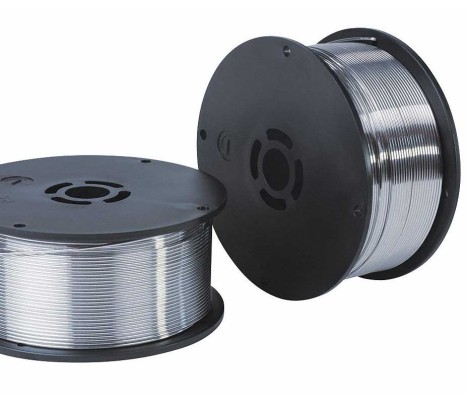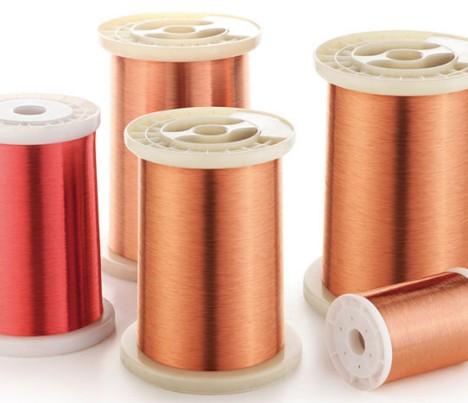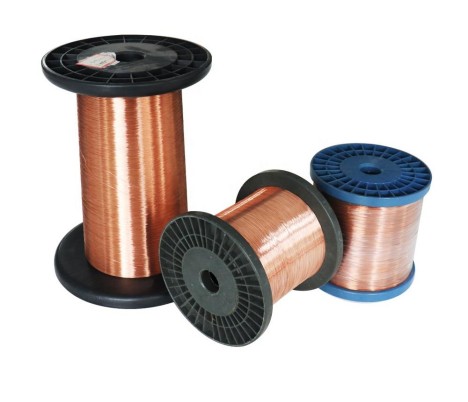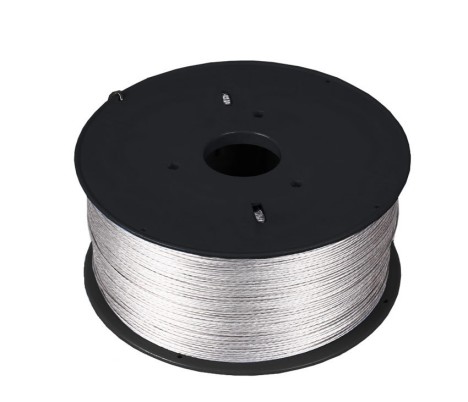Introduction
Aluminum alloy wire is a metal wire product with a tensile strength σb (MPa) ≥ 180. Aluminum alloy wires are used in large-span high-voltage overhead transmission lines, and steel-cored aluminum alloy stranded wires are the most used. The production and application technology of this type of wire is basically mature, but its heat resistance and corrosion resistance are relatively weak. The transmission capacity of the line is limited to a certain extent.
Aluminum / aluminum combined with various percentages of other metals such as copper, manganese, magnesium, and chromium form the aluminium / aluminum alloys. In most cases aluminium / aluminum 2000 series alloys in the form of sheet are clad with a high-purity aluminium / aluminum 6000 or 7000 series alloy to provide physical and electrolytic protection to the key material, and thereby increasing resistance to corrosion. Aluminium / aluminum 2018 alloy is a heat treatable wrought alloy. The following datasheet will provide more details about aluminium / aluminum 2117 alloy.

Chemical Composition
The table below shows the chemical composition of aluminum alloys.
The conductors of overhead transmission lines require good electrical conductivity and a certain strength to support their own weight and external natural loads (wind load, ice load). On long-span high-voltage overhead transmission lines, steel-cored aluminum alloy stranded wires are most used. The production and application of high-strength heat-resistant all-aluminum alloy stranded wire is still in its infancy in China. However, due to its advantages of simple wire connection, convenient maintenance, and relatively economical comprehensive engineering cost, it is widely used in line reconstruction and long-span line construction. has gradually become the object of use.
| Element | Content |
| Aluminum, AL | 94.3-97.6 |
| Copper, CU | 2.2-3 |
| Silicon, Si | ≤0.80 |
| Iron, Fe | ≤0.70 |
| Zinc, Zn | ≤0.25 |
| Magnesium, Mg | 0.20-0.50 |
| Manganess, Mn | ≤0.20 |
| Chromium, Cr | ≤0.10 |
| other(each) | ≤0.050 |
| other(total) | ≤0.15 |

Mechanical Properties
The list of mechanical properties of aluminum alloys is shown in the table.
With the rapid development of science and technology, the use of high-strength heat resistance aluminum alloy stranded wire instead of steel-cored aluminum alloy stranded wire has attracted widespread attention in the world. High-strength heat-resistant all-aluminum alloy is an aluminum alloy conductor material with high tensile strength and good heat resistance. After being made into a wire, it has high service temperature, good heat resistance, excellent electrical conductivity, large carrying capacity, and It has outstanding advantages such as high tensile strength, light weight, good sag characteristics, excellent welding performance and corrosion resistance.
| Properties | Metic | Imperial |
| Tensile strength | 296MPa | 43000psi |
| Yield strength | 165MPa | 1400psi |
| Elongation at break | 27% | 27% |
| Poisson’s ratio | 0.33 | 0.33 |
| Elastic Modulus | 71GPa | 10300ksi |
| Shear strength | 193MPa | 28000psi |
| Hardness, Brinell | 70 | 70 |
| Hardness, Knoop | 93 | 93 |
| Haedness, Vickers | 81 | 81 |
| Machinability | 50 | 50 |

Fabrication
Machinability of aluminium alloy is good in the T4 condition; however machining is difficult in the annealed condition. The use of oil lubricant is recommended for all processes. This alloy has very good workability with hot and cold working. Hot working should be performed at 426-343°C (800 to 650°F). Both should be performed with the alloy in T4 or O (annealed) conditions.
Welding of aluminium / aluminum 2117 alloy can be performed using TIG or MIG methods. It is recommended that the filler rod be of the same alloy. Forging should be carried out 521-343°C (970-650°F). Likewise annealing should be performed at 412°C (775°F) for 3 h
followed by controlled cooling at 10°C (50 °F)/h down to 260°C (500 °F). Finally, it should be air cooled.
Determine the chemical composition of the alloy, optimize the addition ratio and order of each alloy element, control the composition segregation, the distribution and shape of the precipitated phase, and ensure the mechanical properties, heat resistance and electrical conductivity of the alloy. When adding a variety of alloying elements, not only the strength requirements, but also the heat resistance performance should be considered, and the high electrical conductivity should be ensured. Melt purification and casting process control, reduce the influence of harmful impurities and gases, and improve the overall quality of ingots. Develop effective controlled rolling, wire drawing technology and intermediate treatment process, and improve the mechanical and electrical properties of products through technological means on the basis of stable alloy composition.

